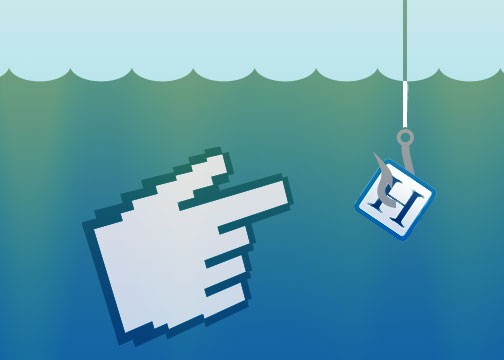GET OUR FOUNDER'S LATEST BOOK:
Disrupt Your Now: The Successful Entrepreneur's Guide to Reimagining Your Business & Life
Join Lisa every Tuesday at 7pm Eastern for her live show on Facebook & YouTube.
Understanding Click-Bait: Why it Works, and Why You Should Avoid it Anyway

Click-bait is a both an old and a new concept. While it's relatively young, low-brow, grocery-store-aisle tabloids have been employing similar tactics to sling their rags for decades. “Guess who's baby bump this is!” “10 Ways to Please Your Man!” “Doctors Hate This New Miracle Berry!” We've all seen these before, and we've all rolled our eyes at them. That is, until we see the one that actually grabs our attention. Who is the top choice to play Luke Cage?! What are the top 10 coolest video game easter eggs?!
So why is it an effective tactic for grabbing a person's attention, even when they're aware that it's a cheap manipulation and intentional obfuscation of content? It's simple. Click-bait tricks the reader into playing a game with the article by asking the reader to make his or her own list of top 10 Interspecies Sci-Fi Kisses in Movie History, or guessing just what Johnny Depp wore on the red carpet. And once we start playing that game, well, we have to know whether or not we've won.
Inevitably, when we succumb to our baser instincts and click on these shallow imitations of content, we are disappointed. Not only in ourselves, but in the actual “article”. The answers are never crazy, or revolutionary, or prophetic. If they were, they wouldn't need to resort to the journalistic equivalent of grandpa's goofy close-up magic. If grandpa was really capable of making money appear out of thin air, he wouldn't be yanking quarters out of your ear. He'd be having an abraca-daiquiri in the presidential suite of some resort in Cabo.
Regardless, we now understand why it works. Or, at least, we understand one major reason why it works. I'm not trying to write a dissertation on the human psyche here. I'm trying to write a blog post. Stick with me.
So, if we accept that click-bait works, and that it works well, why shouldn't we use it? Because it's bad for your brand.
First of all, it treats your reader like he or she is stupid. It's condescending and it doesn't encourage an engaged, loyal readership. It encourages a high-volume, ethereal readership that is almost impossible to retain for a meaningful amount of time.
Second, click-bait is typically optimized for only one metric: shares and likes on social media. While we all love it when our friends click that little thumb on Facebook, the reality is that most people aren't reading what they're sharing. This means that this click-bait isn't necessarily generating more page exposures, and it's certainly not generating any repeat exposures. Think about a really great article you've read on a subject you care about. You might go back to that article to read it again for pleasure. You might visit it again to reference it. You might read it at a meeting if it's relevant for work. But once you know who Jennifer Aniston's new boyfriend is, you're never going to read that “article” again.
Third, many link agregates and social media platforms have begun rejecting click-bait titles, either culturally or through explicit rules regarding content. By manufacturing manipulative titles you're guaranteeing that your article will be at best met with scorn on some of the best platforms for sharing it.
So, for the sake of your own site, try to avoid cheap tricks like click-baiting in the future.
